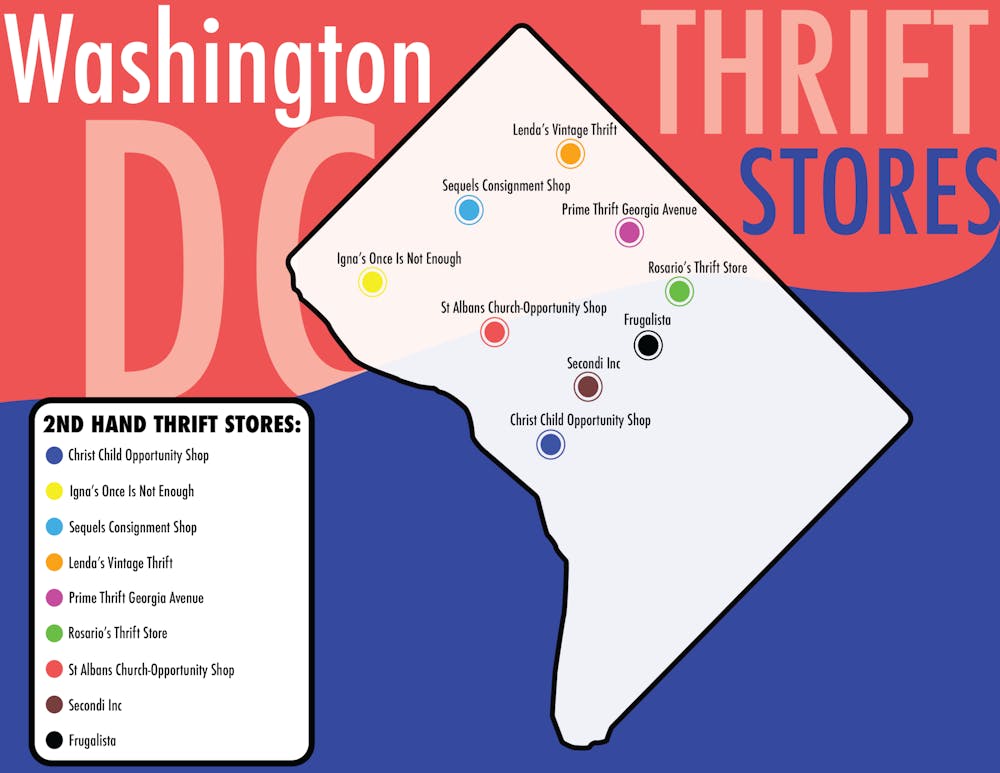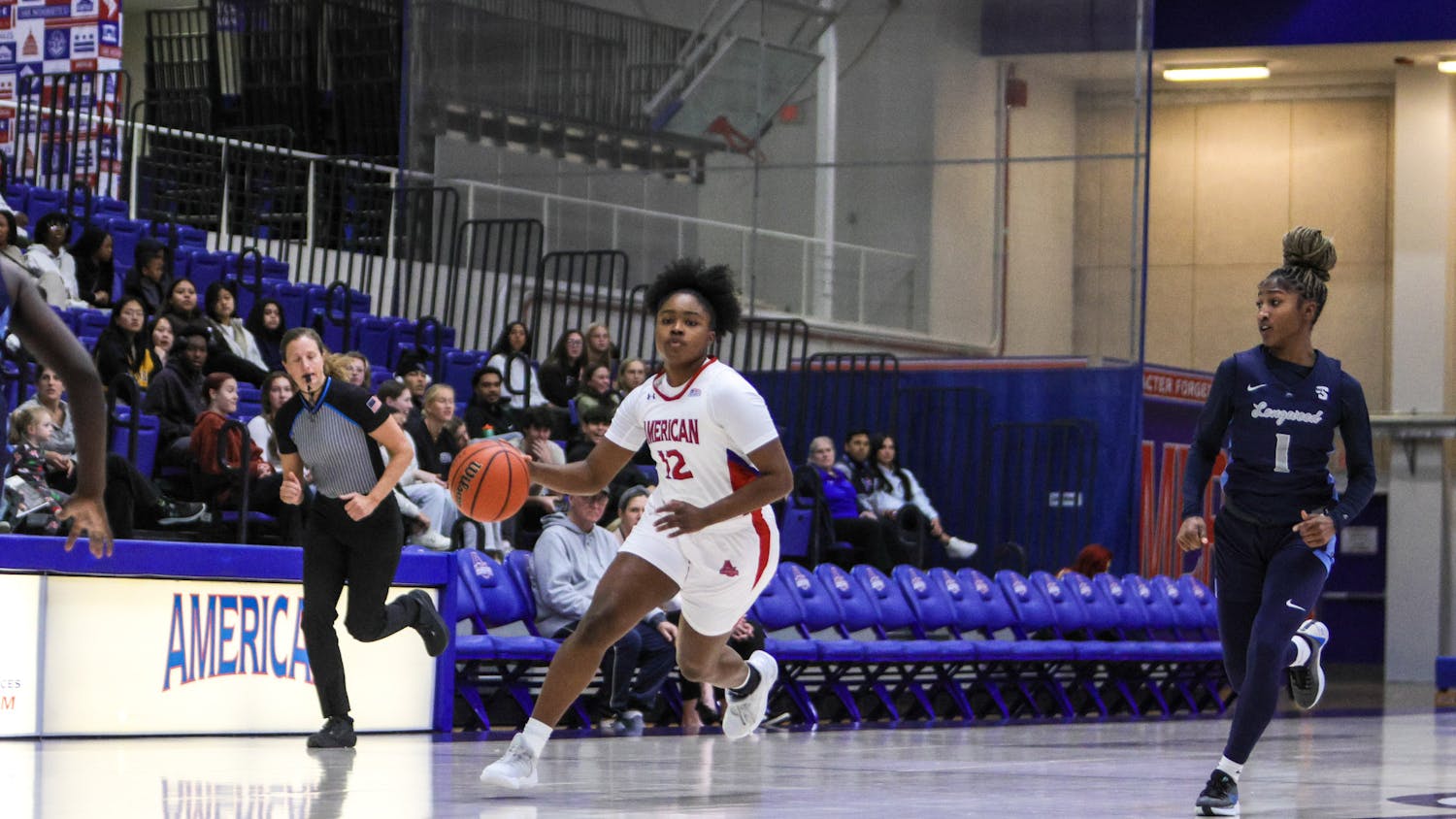From the Newsstands: This story appeared in The Eagle's December 2023 print edition. You can find the digital version here.
In their time at American University, many students experiment with new clothing choices. Often, this means seeking out secondhand stores to enhance their wardrobes on a budget.
Some students find D.C. thrift stores inaccessible, preferring to shop at large-format stores like Goodwill.
Aiden McPhillips, a junior in the College of Arts and Sciences, said that many of their favorite thrift stores are not accessible by public transportation.
“All of my favorite ones I am only willing to go to because I can get there by car,” McPhillips said. “I think Metro accessibility is a huge thing. I think expanding lines or bus routes could be incredible.”
McPhillips also said there isn’t much variety in the stores available. “A lot of them are very much overpriced,” McPhillips said.
While McPhillips thinks more accessible thrift stores near campus would be great, they are unsure if they would “actually be accessible to students” who need low prices or if they would just “continue to expand the accessibility for students who see thrifting as a hobby more than a necessity.”
According to Vox, there has been criticism about shifting prices in the market for thrifted clothing. “The general argument is that resellers and bulk buyers are inadvertently raising the prices of thrifted goods by purchasing items they don’t personally need,” Vox reported.
“Places like Walmart and the forms of fast fashion there and how you can get a lot of essentials for really cheap — that’s what a lot of people need,” McPhillips said. “They used to be able to get better quality things at those same prices at thrift stores.”
Speaking to students’ varied economic statuses, McPhillips noted that “a lot of people who go to Georgetown Flea [Market] don’t need thrift prices and that’s why they’re fine with Georgetown Flea.”
Ben Winokur-Applebaum, a freshman in the School of Public Affairs, said there are some larger secondhand stores he likes to thrift at, like Goodwill, Salivation Army and Planet Aid Thrift in Bethesda.
“I like to thrift because I like getting more clothing that isn’t expensive,” Winkour-Applebaum said. “That is a big priority for me.”
Among students, the impact of affordability varies. This means that the difference between true thrift stores and secondhand vintage shops, which tend to be more expensive, is important to students.
“I would even have a hard time myself being able to pinpoint which places in D.C. are pure thrift and which places are secondhand, because there is that tailor-made experience some people are looking for,” McPhillips said. “A lot of micro-influencers in D.C. will do the thrifting for you, and then upsell their stuff.”
While McPhillips has struggled to find clothes in their budget, Winokur-Applebaum said that he has found affordable options close to AU.
“Sure, there will be some [stores] that will capitalize on the number of people and raise prices,” Winokur-Applebaum said. He went on to explain that, despite this, places like Goodwill and Salvation Army are still cheap.
Wonk Trade, a part of the Zero Waste Club, is a student-run trading post for clothing open a few days per week.
“It's a trading model so it’s all free,” Kayah Ryerson, president of Zero Waste Club and a senior in SPA, said. “All of these clothes were donations from other community members.”
In terms of thrift store availability, Ryerson agreed with McPhillips. “It’s very difficult to find places here,” Ryerson said. “I feel like, especially in D.C. where things are quite expensive and out in Maryland and Virginia it’s not super accessible by public transportation.”
Ryerson also explained that new, more affordable clothing tends to rely on poor labor practices.
“Environmental[ism] is definitely a big part of it,” Ryerson said. “Definitely trying to reduce consumption, especially of new things and trying to promote being more mindful when we shop.”
Additionally, the financial benefits of clothing exchanges like Wonk Trade are huge, especially for students looking for clothing appropriate for office jobs or internships.
Organizations on campus work hard to educate students about things they are passionate about, so “the University could do more promotion of all of this good work that is happening and [try] to really encourage students to participate in it,” Ryerson said.
Angela Geosits, a professor in the Department of Literature, makes a lot of her own clothing, which she said has taught her about clothing construction.
“I know what is possible with a garment, in terms of shortening sleeves, taking it in, modifying styles or shapes to make it exactly what I want,” Geosits said.
“Clothing is being overproduced at really absurd rates, so that is one factor,” Geosits continued. “And buying secondhand is one way to take a step back from that direct consumption of new clothing.”
Looking to provide alternatives to buying new, Geosits recommended exploring places like SwapDC and utilizing resources on campus such as the Makerspace, which has sewing tools to modify clothing.
The average consumer in the United States throws away about 81.5 pounds of clothing per year, despite more environmentally friendly options. From a global perspective, “we are shipping our excess stuff and making it someone else's problem, because there is such a volume of clothing that people are donating,” Geosits said.
Much of the clothing that gets donated to secondhand stores is being sold internationally, Geosits explained. According to Green America, about 700,000 tons of used clothes get shipped overseas and about 10 million tons get sent to landfills.
“The most sustainable garment you’re going to have is the one that’s already in your closet,” Geosits said. “Taking care of that and making that last as long as you can so that the resources that were expended for it to end up with you are being put to best use.”
This article was edited by Maria Tedesco, Patricia McGee and Abigail Pritchard. Copy editing done by Isabelle Kravis, Luna Jinks and Emilia Rodriguez.





